What and how is it better to insulate the floors in the apartment: we choose the material and method of insulation
The floor is the coolest surface of the room. Even with relatively warm air temperatures, the floor may remain cold. There is nothing strange about this. Recall the laws of physics: cool air always goes down, and warm air goes up. But that is not all. Cold enters the flooring of our apartments through interpanel joints, corner slots, damp basements. Up to 20-30% of the heat can leave the room through a poorly insulated floor! At the same time, heating bills are increasing, and the rooms are still cold. In this case, it's time to start thinking how to insulate the floors in the apartment. This will help reduce heat loss and create a more comfortable indoor climate.
Content
Choose a warming material
The floor is insulated with materials with high thermal insulation properties that prevent heat from leaving the room. For these purposes, the most popular are:
- Bulk materials (expanded clay, wood concrete, shavings) - have good heat-insulating qualities, relatively inexpensive;
- Mineral wool and glass wool - effective in terms of heat and sound insulation, fireproof, not susceptible to infection by fungi and attacks of rodents, hygroscopic (require mandatory vapor barrier);
- Polyfoam and expanded polystyrene - materials are moisture resistant, not subject to deformation, do not ignite, conduct heat poorly, drown out sound noises.
It is impossible to say which of these materials is the best. You need to choose based on your financial capabilities and the functionality of the insulated room.
Insulation of the wooden base
The traditional way of warming wood floor is laying the selected type of heat insulator in the space between the lags.
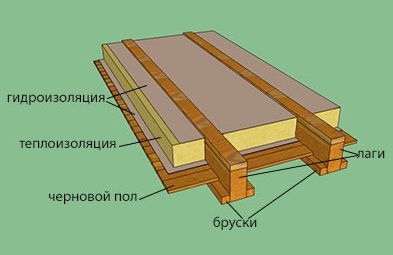
To do this, perform the following steps. First of all, they remove the old flooring, open the floor. A vapor barrier layer is laid, for example, a polyethylene or polypropylene film. They unfold the material and lay strips on top of the wooden frame of the floor, laying them with an overlap of 15-20 cm. The joints are reliably insulated with special tape. When laying, start a vapor barrier film on the walls to a height of 3-5 cm.
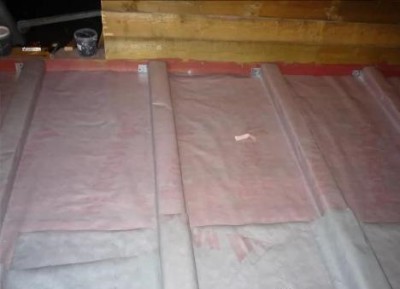
Between the lags lay insulation. When using expanded clay, it is evenly poured between the lags, leveling the rule under one level. Sheet or roll insulation is laid close to the logs, without cracks.
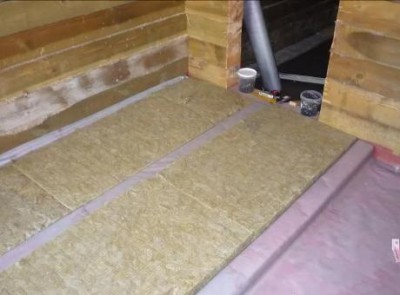
On top of the insulation (if mineral wool or glass wool was used) create another layer of vapor barrier.
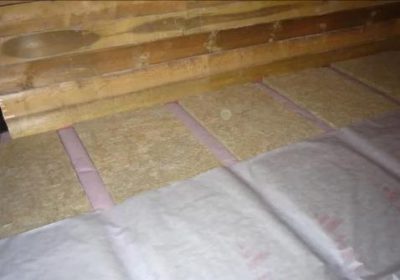
Expanded polystyrene is an affordable insulation that does not absorb moisture and is quite simple to install. You can read more about the use of such material in our article:https://floor.techinfus.com/en/ustroistvo-rmnt/uteplenie-pola-penopolistirolom-penoplastom.html.
They lay wooden boards, thick plywood, OSB or GVL sheets on top of the insulated floor.
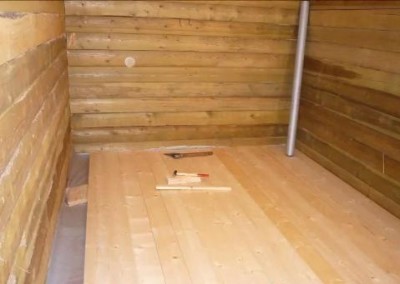
If necessary, install the finish coating: laminate, parquet, linoleum, carpet, etc.
Concrete floor insulation
In most cases, the floors in apartments of urban high-rise buildings are reinforced concrete slabs. The concrete floor itself is very cold, but if we add to this the gaps between the slabs, the joints between the walls and the floor are not tight enough, it becomes really icy. Therefore, warming the concrete surface is a priority for residents of multi-storey buildings who seek to increase comfort in their apartments.
Each master engaged in warming derives his own formula for an ideal warming “pie” on concrete slabs. Consider the most popular options.
Option number 1 - insulation + screed
Significantly improve the thermal insulation properties of the concrete floor by laying insulation between the floor slab and the cement leveling screed. In this case, floor insulation in the apartment is as follows. First of all, remove the old flooring, remove the screed. The surface of the slab is cleaned of debris, dust, eliminate bumps from the remains of the cement screed.
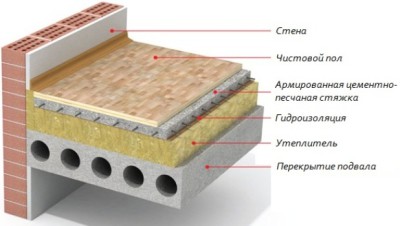
Then perform vapor barrier. A polyethylene or polypropylene film is laid on a concrete base, laying strips of overlap of 15-20 cm and leading 3-5 cm to the walls. The overlap joints are insulated with a special adhesive tape. Styrofoam with a minimum thickness of 50 mm and a density of 25 mm is laid on the vapor barrier film. Instead of polystyrene foam, you can use polystyrene foam, mineral wool, etc. Sheets of insulation are laid as densely as possible to each other so that cold bridges do not form in the seams. After that, another layer of vapor barrier is laid. If foam or polystyrene foam was used as a heater, then you can skip this step.
Now they lay a metal mesh with square cells (cell side - 50-100 mm). The grid will serve as a frame for cement screed, make it more durable. A cement screed with a minimum thickness of 50 mm is poured over the mesh. A thinner screed will be unreliable - after a while it will begin to crack and crumble. The cement screed should dry, it will take about two weeks. Then, to strengthen the top layer, it is necessary to cover it with a primer. After all this, any decorative coating is laid on the screed.
Expanded clay is well suited for insulation of concrete floors. About how to properly use such a heater, you will learn in the material:https://floor.techinfus.com/en/ustroistvo-rmnt/uteplenie-pola-keramzitom.html.
Option number 2 - insulation on the logs, without the use of wet processes
This option is similar to warming a wooden floor. The difference is that logs are initially provided for in the thickness of the wooden floor, between which it is convenient to lay any type of insulation. In the case of concrete floors, these logs will have to be constructed independently.
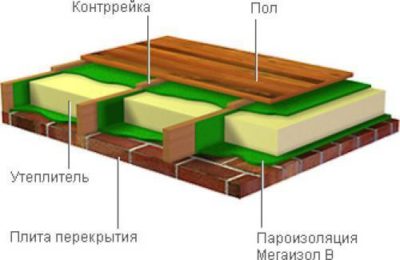
The technology of insulation of the concrete floor in logs:
1. The first step is to clean the concrete slab from old screed, debris and dust.
2. Arrange waterproofing. It is convenient to use ready-made waterproofing polymer-bitumen solutions, which are applied to the concrete surface with a roller or brush. Another option is to use a vapor barrier film for this purpose, which is laid on the floor with an overlap, leading to adjacent walls. If you want to save, then the most acceptable material for hydro and vapor barrier is ordinary plastic film.
3. Install the lags at a distance of not more than 0.9 m from each other, if you take a step longer, the floors will bend. Instead of a lag, if it is supposed to use bulk material for insulation, metal beacons are attached to the floor.
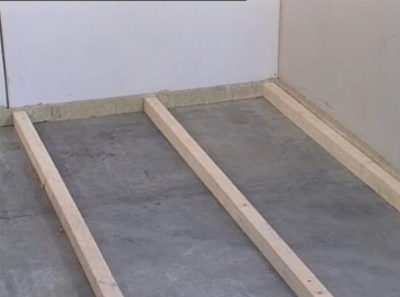
4.Lay the selected insulation. Both mineral wool and polystyrene, and any version of bulk thermal insulation materials, will do. The insulation in the form of sheets or rolls is laid out tightly, without gaps between the lags. Bulk material (for example, expanded clay) is poured between beacons and leveled under the same metal rule.

5. Flooring. To do this, you can use sheets of plywood, GVL, OSB, chipboard with a thickness of 10-15 mm. It is more reliable to lay them in two layers so that the seams of the lower sheets overlap with the panels of the upper sheets. Thus, the floor will be seamless, which eliminates the possibility of bridges of cold. After laying, the layers of sheets are interconnected and lags (beacons) using self-tapping screws.

6. Arrange any finishing flooring.

In a short video, the process of warming along the lags will be clearly demonstrated to you:
To warm the balcony or loggia, you can use penoplex. Let's talk about this material and for what type of floors it should be used here:https://floor.techinfus.com/en/ustroistvo-rmnt/uteplenie-pola-na-balkone-i-lodzhii.html.
Features of floor insulation by spraying
In addition to the above methods of insulation, there is another, professional, - spraying on the floor base a thin layer of polyurethane foam (PPS). As a result, a monolithic, without seams, surface with a thickness of 50-100 mm is formed on the floor. The technology for applying PPP involves the use of special equipment and some skills, so this work can only be done by specialists.
For spraying, high-pressure equipment is used, which allows you to apply the material to the floor in the form of an aerosol liquid. Within seconds, this liquid sprayed layer turns into a rigid foam of polyurethane foam. The efficiency of the obtained insulating layer is superior to any other heaters - PPS has a lower thermal conductivity than mineral wool, polystyrene, expanded clay, foam concrete, etc. In addition, polyurethane foam is absolutely moisture-proof, therefore it does not need additional waterproofing and vapor barrier. This material does not require preparation of the floor before application, is not damaged by rodents, does not rot, does not burn. The service life of the heat-insulating layer of PPP is estimated by the producers of this material at 30-50 years.
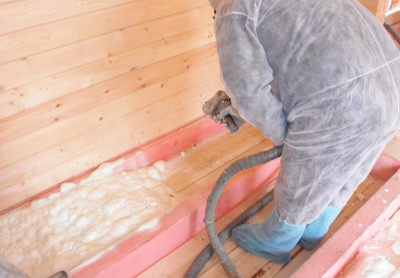
Alternative methods of insulation
If the heat loss through the floor is small, then you can use simpler methods of insulation. Their essence is to use a material with a low coefficient of thermal conductivity as a floor covering.
The simplest thing is to lay a carpet on an existing floor or lay a carpet. The greatest warming properties are possessed by products from natural wool with a long pile.
Another option is to use thickened linoleum on a warm substrate (felt, jute) or on a foam base. Similarly, you can "warm" and the laminate, laying under it a thickened substrate of cork, polyethylene foam or expanded polystyrene.
Thus, in order for the floor to maintain a comfortable temperature even in winter, it is not necessary to use additional heating systems and “warm floor” constructions. In most cases, to increase the floor temperature by several degrees, it is enough to properly insulate it with the help of available materials.

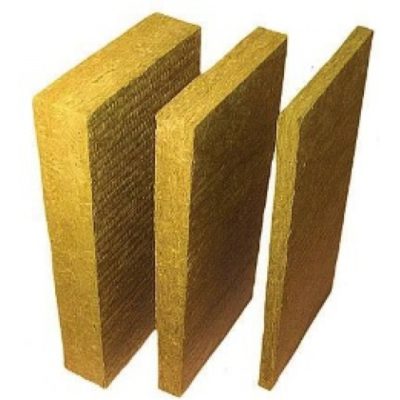
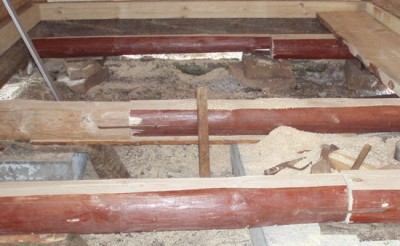
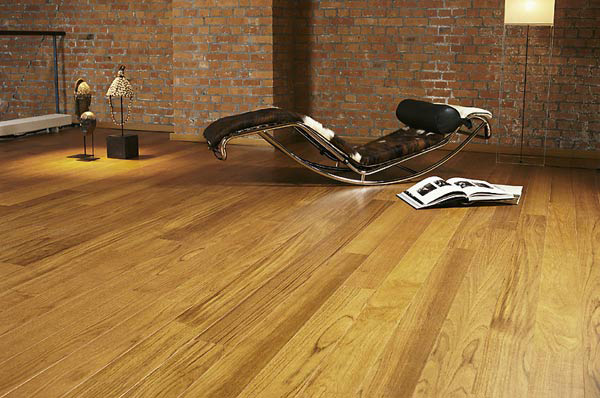
8 comments